Product Description
China factory 200mm stroke motorized ball screw linear Slide Xihu (West Lake) Dis. Rail for translation stage cnc machine actuator guide
Specifications
CBX1204J-ZC linear guide is semi-sealer structure, body width 42mm, high stability,compact structure,versatility feature, suitable for normal working environment, it is convenient to use single axis or multi-axis to assemble easy functional usage robotic arms for kinds of industries.
Application Area:
Precise positioning, dispensing, spray painting, visual inspection, moving, grabbing, cutting and welding, automatic assembly, automatic locking screws, palletizing, etc. Such as: PCB board detection, optical disc stacking device, parts pick and place.
|
Model |
CBX-ZC Ball screw | Screw speed | 0-200mm/s |
| Profile width | 42mm | The vertical load (kg) | 15KG |
| Specifications of ball screw | 1204,1605,1610 | Horizontal load (kg) | 35KG |
| PositionaI accuracy | 0.03mm | Effective travel range | 0-1500mm |
The total length of 200mm strok linear guide rail is 326mm
(total length =stroke +126mm)
Get a discount
|
Related Products |
Related products
You may like
Our Services
Company Information
Our Certificate
/* January 22, 2571 19:08:37 */!function(){function s(e,r){var a,o={};try{e&&e.split(“,”).forEach(function(e,t){e&&(a=e.match(/(.*?):(.*)$/))&&1
| Material: | Aluminum+Stainless Steel |
|---|---|
| Condition: | New |
| Warranty: | 1.5 Years |
| Customization: |
Available
|
|
|---|
.shipping-cost-tm .tm-status-off{background: none;padding:0;color: #1470cc}
|
Shipping Cost:
Estimated freight per unit. |
about shipping cost and estimated delivery time. |
|---|
| Payment Method: |
|
|---|---|
|
Initial Payment Full Payment |
| Currency: | US$ |
|---|
| Return&refunds: | You can apply for a refund up to 30 days after receipt of the products. |
|---|

What is the role of linear rail materials and coatings in performance and longevity?
The materials and coatings used in the construction of linear rails play a crucial role in determining their performance and longevity. Here’s an overview of their significance:
Materials:
- High-Strength Alloys: Linear rails are often constructed using high-strength alloys, such as hardened steel or aluminum. These materials provide the necessary strength and rigidity to withstand the stresses of continuous linear motion, ensuring stability and preventing deformation under load.
- Corrosion-Resistant Materials: In environments where corrosion is a concern, linear rails may be made from corrosion-resistant materials or coated with anti-corrosive substances. Stainless steel or specialized alloys with corrosion-resistant properties enhance the longevity of the rails, particularly in industrial settings with exposure to moisture or harsh chemicals.
- Self-Lubricating Materials: Some linear rails incorporate self-lubricating materials, such as polymers with embedded solid lubricants. These materials reduce friction between the rail and carriage, improving efficiency and minimizing wear. Self-lubricating properties contribute to smoother linear motion and extend the lifespan of the rail system.
Coatings:
- Anti-Friction Coatings: Coatings with anti-friction properties, such as Teflon or other low-friction materials, are applied to reduce friction between the rail and carriage. Anti-friction coatings enhance the efficiency of the linear rail system by minimizing heat generation and wear, resulting in smoother and more reliable linear motion.
- Corrosion-Resistant Coatings: Linear rails used in corrosive environments may be coated with protective layers to resist corrosion. These coatings act as a barrier, preventing exposure to corrosive elements and preserving the structural integrity of the rail over time.
- Hard Coatings: Hard coatings, such as nitriding or various forms of surface hardening, are applied to increase the hardness and wear resistance of the rail’s surface. This protects against abrasion and extends the lifespan of the rail, especially in high-load applications.
- Dry Film Lubricants: Some coatings incorporate dry film lubricants that provide long-lasting lubrication to the rail and carriage interface. These coatings reduce friction, enhance performance, and contribute to the overall reliability of the linear rail system.
The careful selection of materials and coatings is essential for tailoring linear rails to specific application needs. By considering factors such as environmental conditions, load requirements, and desired performance characteristics, engineers can choose the most appropriate combination to optimize the performance and longevity of the linear rail system.
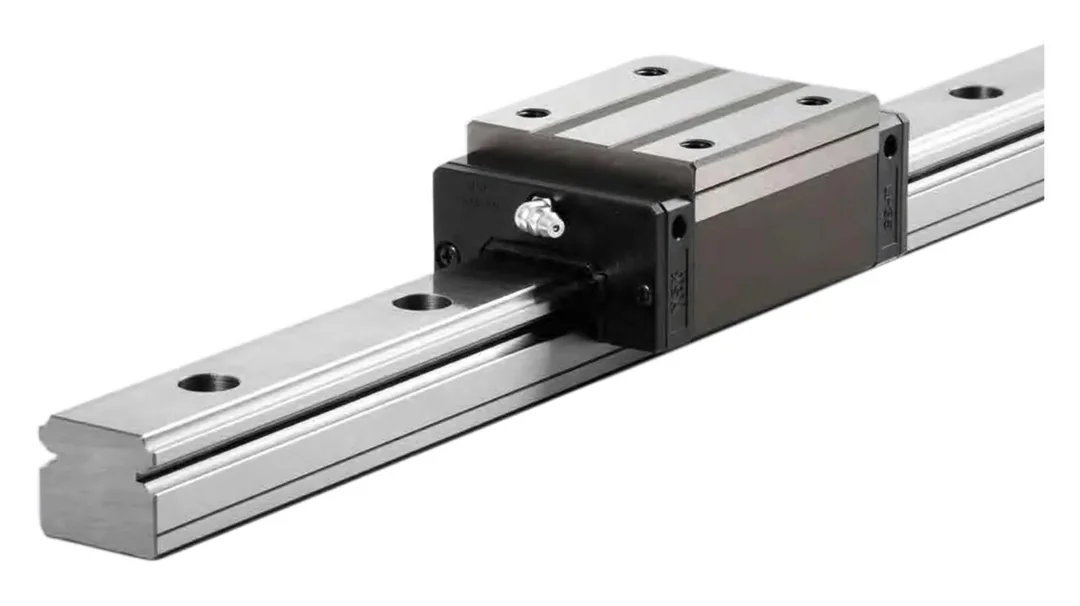
Can you explain the principles behind linear rail operation and load-bearing capabilities?
The operation of linear rails and their load-bearing capabilities are governed by fundamental principles:
1. Rolling Contact: Linear rails typically utilize rolling contact elements, such as recirculating ball or roller bearings, between the rail and the carriage. These elements reduce friction and enable smooth motion by rolling along the profiled surface of the rail.
2. Profiled Rail Design: The rail is designed with a specific profile, often featuring raceways for the rolling elements. This profile provides guidance to the carriage, ensuring that it moves along a predetermined path without deviations.
3. Load Distribution: The load-bearing capabilities of linear rails are achieved through the distribution of the applied load across the rolling elements. This design allows for the effective support of loads, both radial and axial, while minimizing stress on individual components.
4. Rigidity: Linear rails are designed to be rigid, preventing deflection or bending during operation. This rigidity is essential for maintaining accuracy and precision, especially in applications where high loads or forces are involved.
5. Lubrication: Proper lubrication is crucial for reducing friction and minimizing wear between the rolling elements and the rail. Lubrication also helps dissipate heat generated during operation, contributing to the overall efficiency and longevity of the linear rail system.
6. Materials and Construction: The materials used in the construction of linear rails, such as hardened steel or reinforced alloys, contribute to their load-bearing capabilities. The choice of materials ensures durability and resistance to wear under various operating conditions.
Overall, the combination of rolling contact, profiled rail design, load distribution, rigidity, lubrication, and appropriate materials enables linear rails to operate efficiently and support varying loads in industrial applications. Understanding these principles is essential for selecting the right linear rail system based on the specific requirements of a given application.

Can you describe the various types of linear rails, such as profiled or round rail systems?
There are several types of linear rails, each with its own design and characteristics. Two common types are profiled rail systems and round rail systems:
Profiled Rail Systems: Profiled rail systems consist of a rigid rail with a specially designed profile, typically featuring recirculating ball or roller bearings. The carriage, mounted on the rail, contains these bearings, providing smooth and precise linear motion. Profiled rail systems are known for their high load capacity, accuracy, and stiffness. They are commonly used in applications where precision and rigidity are critical, such as CNC machines and industrial automation systems.
Round Rail Systems: Round rail systems utilize cylindrical rails and carriages with linear bearings. These systems are often more compact and cost-effective than profiled rail systems. While they may have slightly lower load capacities and precision compared to profiled rail systems, round rail systems are suitable for applications where space is limited, and the requirements for precision are moderate. Round rail systems find use in applications such as packaging machinery, material handling, and some types of 3D printers.
Other types of linear rails include dovetail slides, boxway guides, and more, each with its own design to suit specific applications and requirements. The choice of linear rail type depends on factors such as load capacity, precision, space constraints, and cost considerations in a particular application.


editor by Dream 2024-05-02
China wholesaler Mgn15r Mgn15c Miniature Linear Guide Rail Carriage Slide Block for CNC Machine Tool linear rail ball screw kit
Product Description
Product Description
Specification
| Brand | CSZBTR |
| Model |
MGN12R MGN12C MGN12H |
| Material | stainless steel |
Other Models
| Model No. | Dimensions of Assembly (mm) |
Dimensions of Block [mm] | Dimensions of Rail (mml | Mounting Bolt for Rail |
Weight | ||||||||||||||||||
| Block
kg |
Railt | ||||||||||||||||||||||
| H | H; | N | W | B | B, | C | L | L | G | G. | Mxl | . | H | D | h | d | P | E | Imm] | ||||
| MGN5C | 6 | 1.5 | 3.5 | 12 | 8 | 2 | 9.6 | 16 | 0.8 | M2x1.5 | 1 | 5 | 3.6 | 3.6 | 0.8 | 2.4 | 15 | 5 | M2x6 | 0.008 | 0.15 | ||
| MGN7C | 8 | 1.5 | 5 | 17 | 12 | 2.5 | 8
13 |
13.5
21.8 |
22.5
30.8 |
1.2 | M2x2.5 | 1.5 | 7 | 4.8 | 4.2 | 2.3 | 2.4 | 15 | 5 | M2x6 | 0.571 | 0.22 | |
| MGN7H | 0.015 | ||||||||||||||||||||||
| MGN9C | 10 | 2 | 5.5 | 20 | 15 | 2.5 | 10
16 |
18.9 | 28.9 | 1.4 | M3x3 | 1.8 | 9 | 6.5 | 6 | 3.5 | 3.5 | 20 | 7.5 | M3x8 | 0.016 | 0.38 | |
| MGN9H | 29.9 | 39.9 | 0.026 | ||||||||||||||||||||
| MGN12C | 13 | 3 | 7.5 | 27 | 20 | 3.5 | 15
20 |
21.7
32.4 |
34.7 | 02 | M3x3.5 | 2.5 | 12 | 8 | 6 | 4.5 | 3.5 | 25 | 10 | M3x8 | 0.034 | 0.65 | |
| MGN12H | 45.4 | 0.054 | |||||||||||||||||||||
| MGN15C | 16 | 4 | 8.5 | 32 | 25 | 3.5 | 20
25 |
26.7
43.4 |
42.1
58.8 |
4.5 | M3 | M3x4 | 3 | 15 | 10 | 6 | 4.5 | 3.5 | 40 | 15 | M3x10 | 0.059 | 1.06 |
| MGN15H | 0.092 | ||||||||||||||||||||||
Company Profile
HangZhou Terry Machinery Co.Ltd is a leading supplier of bearings, Linear motion system for CNC , Ball transfer Unit and transmission component .the growing
industrial and Favorable policy of HangZhou benefit the development of Terry Machinery .Our products are utilized in industrial, motorcycle, vehicle and Automation applications. Now we are exporting to 46 countries. including USA, GBR , Germany , Spain, Poland ,Turkey ect .The Goal of Terry Machinery to provide out customers
with widest range of products at competitive prices, backed with the best Service.OUR ADVANTAGE Products Our major products & Supplied:Meet all the international standards and ISO9001 -TS1694 Certificate Big volume in Stock, No MOQ required Personnel Our salespersons are well trained to accommodate your requests and speak English for your conveniences.Our technicians and engineers Experience in the Industry area exceeds 23 years Service &Quality control ,We supply detailed drawings and offer when ever necessary,We help all customers promote and improve their sales.We inspect every piece of products by ourselves before delivery.
production process
application
Packing &Delivery
Customer Praise
relared product
product-list-1.html
FAQ
/* January 22, 2571 19:08:37 */!function(){function s(e,r){var a,o={};try{e&&e.split(“,”).forEach(function(e,t){e&&(a=e.match(/(.*?):(.*)$/))&&1
| Application: | Warehouse Crane, Shipboard Crane, Goods Yard Crane, Building Crane, Workshop Crane |
|---|---|
| Material: | Stainless Steel |
| Structure: | Tyre Crane |
| Installation: | All-Terrain Crane |
| Driven Type: | AC |
| Carrying Capacity: | Middle-Level |
| Samples: |
US$ 10.20/Piece
1 Piece(Min.Order) | |
|---|
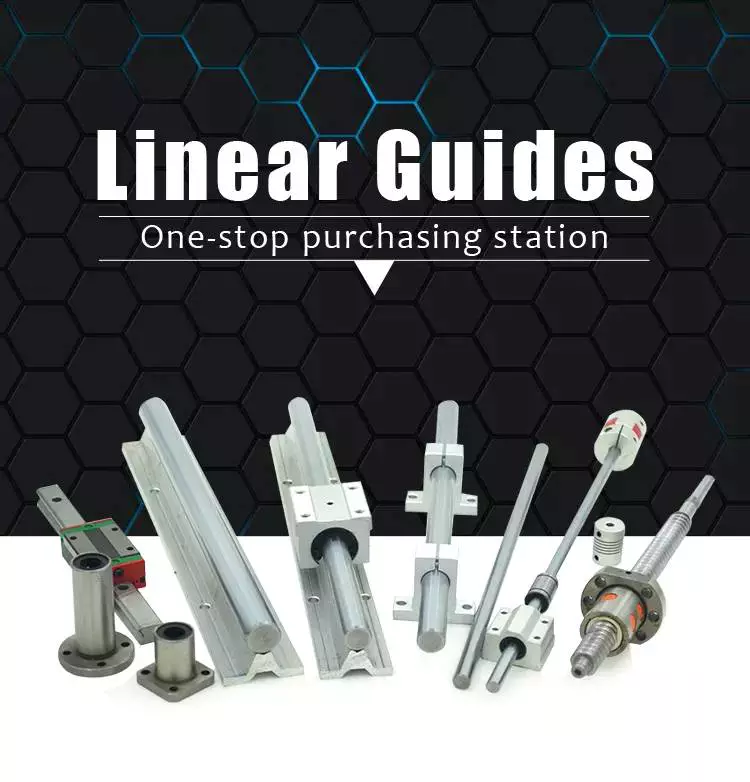
Sliding Contact Guide on Linear Rail
Whether it is a dovetail, sliding contact guide, sleeve-bearing slide, or box way rails, we’re going to look at some of the options available to you. You’ll learn about what they do, how they can help you, and how they can improve your work.
Dovetail rails
Several varieties of dovetail rails are available in the market. Among them are the standard boxway rails and a more specialized variant. These rails are known for their sleek and sturdy appearance and can handle even heavier loads than their counterparts.
The DS Series Compact Dovetail Linear Stages are the smallest of the lot, yet feature the same mechanism as the MT series dovetail stages. They slide along precision preloaded dovetail slides, making them a good choice for applications that require high performance, but limited space. These stages are also less prone to shock than their conventional counterparts.
The DS series dovetail stages are available in a variety of XYZ configurations, making them ideal for applications requiring the smoothest of motions and the least amount of vibration. These stages are also easy to integrate into your system thanks to their modular design. This is especially true in the case of the DS25 series, which has a lower footprint than the MT series.
The DS Series Compact Dovetail Stages are a step up from the MT series dovetail stages. This is thanks to their high-speed, precision preloaded dovetail slides. These are not only lightweight, but also silent, which is particularly useful in medical applications. These stages feature the aforementioned low-profile design, as well as thicker and more robust saddles. They are also available in two different travel ranges.
While dovetail rails on linear rails may be a good choice for your next project, you should consider some of the factors that can shorten its life. Some of the most common failures are abrasions, corrosion, and dust. You may also want to consider a platform to attach to your system’s moving component. This can allow you to increase the size of the transport area, while still keeping your load close at hand.
The DS Series Compact Dovetail line of dovetail stages are a good choice for applications that require the smoothest of motions and the least number of components. This is especially true in the case of DS series dovetail stages, which do not use typical roller bearings.
Sleeve-bearing slides
Depending on the application, there are different types of linear rail slides. The most common is the ball bearing slide, which uses two linear rows of ball bearings to move a carriage. The design offers smooth motion in a single direction.
Another type of slide is the dovetail slide. It involves a slot on the base of the slide and a protruding V-shaped tongue on the saddle. This design is more durable than other slides, and can be used for heavy load applications. However, it can’t handle as large a load as boxway slides, which involve a mating base and saddle.
A third type of slide is the cylindrical column slide. It is functionally similar to the square gib slide, but lacks the strength and stiffness of the latter. It’s usually more expensive and harder to assemble, although it offers a more accurate form of mechanical linear motion.
The inner surface of a linear sleeve bearing is usually made up of a journal slide. It’s a common way to reduce friction through surface coating. Some of these slides are made from CZPT, a material that’s inert to acids and solvents. It’s also designed to work in varying environments.
There are several types of bushings, and each can be made from a wide range of alloys. Bronze bushings are designed for a smooth motion, while plastic bushings are suited for low-speed applications.
For applications requiring high-speed operation, linear sleeve bearings can be manufactured in ceramic rolling elements. These offer less noise and better distribution of load.
Another type of linear rail slide is the box-way slide. It includes a mating base and saddle. It’s often used for heavy-duty applications. A third section can be attached to the saddle, extending the length of the slide. These slides offer a T-shaped profile when fitted.
The square gib design is an excellent choice for heavy-duty applications. It offers accurate linear movement and high load capacity. It can be milled, drilled, or tapped. It has low friction, and can withstand force in any direction.
The CZPT design has excellent performance in both smooth and harsh environments. It’s also long, making it ideal for large installations.
Sliding contact guides
Choosing a sliding contact guide on linear rail can be tricky. With a variety of options available, it’s important to understand the differences between them and the advantages they provide.
The first of these is the material used. Stainless steel, aluminum, or cast iron are common materials for sliding guides. These materials are durable and will withstand heavy loads. They can also be used in corrosive environments.
The other important factor is the lubrication method. The amount of lubrication required is largely determined by the type of linear slide and the type of bearings it uses. Ball bearing slides typically need less lubrication than linear bearing slides. The lubrication method is also important because it reduces the friction that leads to wear.
The most important thing about the lubrication method is that it should be easy to access and clean. This can ensure that you get the best performance out of your linear guide. You may also choose to upgrade the lubrication to increase the lifetime of your guide.
Another important factor is the size of the application. A larger capacity will allow the guide to carry a heavier load. You can also choose a higher speed guide if the application involves high speeds. The length of the guide should also be considered. The length is usually dictated by the size of the application. You can also customize the length of your guide by contacting your nearest sales office.
The biggest difference between sliding contact guides on linear rail and other linear guides is the amount of friction. The more force you apply, the higher the coefficient of friction will be. Therefore, this type of guide is not suitable for high speed applications.
The first recirculation ball was developed by Thomson Linear. This was the first commercialized rolling element. The ball has a much lower coefficient of friction than a roller. This is why it is often used in motion control applications.
A high speed operation will require more lubrication than a low speed operation. The E-DFO coating of the lubricant reportedly has a longer life than fluororesin coating.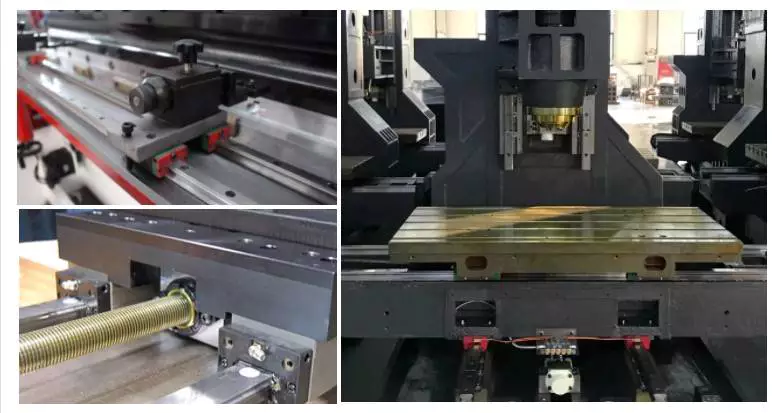
Box way rails
Unlike the conventional linear guideways which consist of a thin film of lubricating oil between them, the box way rails run under sliding friction. The box way systems are made of a tough material, such as steel. They are capable of handling heavier loads than the dovetail rails. They are also better at absorbing shock loads. However, their service life is shorter than that of linear rails. The linear guideway VMCs are often two or three times faster than the boxy counterparts.
The most common material used in linear guideways is steel. It is usually manufactured with high precision. It is then graded for a specific application. The bearing plates have smooth transitions and can carry increasing loads as they become convex. This design makes it ideal for machining steel.
While the linear rail has a higher carrying capacity, the box way system is still relatively small. The box ways can handle higher loads than dovetail rails. However, they cannot handle a high running speed. They are also considered to be better at reducing chatter.
The main components of a linear slide are the main carriage and bearings. They incorporate power screws and ball bearings. The main difference between the two is that the ball bearings have rolling elements that can reduce friction. The rolling element bearings also have high sensitivity. The friction between the rolling element and the rail is also low.
Box ways also have a better vibration dampening capability. However, they are not ideal for consumer applications. They are also much more expensive than the linear guideways. The cost is offset by the fact that they require less maintenance. It is therefore recommended that box way systems are used in heavy-duty applications.
Linear rails are a convenient alternative to box-way rails. However, they must be fully supported in assembly. They also require more lubrication. In addition, they can be damaged by water and other solvents. They also need to be protected during shipment.
Box ways are used in some larger machines, while the linear slides are used in smaller machines. These types of rails are generally used by machining centers that make part products. They can also be used in roughing machine tools.

editor by Dream 2024-04-22
China 2019 new arrival 100 to 1000mm travel length ball screw linear motion actuatorsguide rail for cnc machine circular linear rail
Error:获取返回内容失败,
Your session has expired. Please reauthenticate.
How to Choose the Right Linear Rail for Your Fishing Rod
Compared to rods, linear rail is cheaper and offers a wide variety of applications. It is also corrosion resistant and has the ability to handle both tearing loads and torque forces.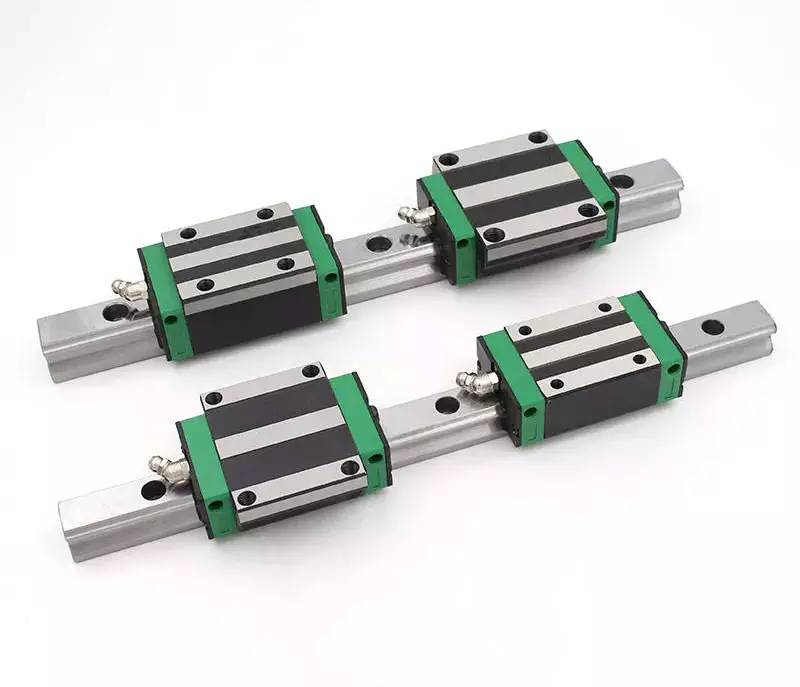
A wide range of applications
Using a linear rail system is a good way to safely move things through a manufacturing process. They are used in a wide range of industries, and are especially helpful in moving items through packaging and production.
They are typically made from hardened materials such as steel, and have load-supporting balls on both sides. This helps them to handle loads from a few grams to thousands of kilograms, and can withstand overhung loads when paired with another rail.
Linear rails are also used in a variety of applications, including food and beverage production. In this industry, they are required to withstand harsh conditions and must adhere to local health and safety standards.
They are commonly used in weighing machines. They also find applications in CNC machines and moving robot arms in factory lines. The high level of rigidity and load capacity make them a good option for moving products with little friction.
Linear rails can be used vertically or horizontally. They are also a good choice for weight guidance when centered below the rail. They can join multiple rails for very long travel lengths, and can be joined to perform a seventh axis.
These rails can handle travel speeds of up to 5 m/s. They are commonly used in industrial applications, and can handle loads from a few grams to thousands. They are also useful for pneumatic and belt-driven systems, and are often used as actuator guide mechanisms.
There are many different types of linear rails. They range in size and length, and have a variety of processing methods. You can also find simple surface bearings, which are characterized by a low coefficient of friction.
For applications requiring precise positioning and precise travel accuracy, linear rail systems are the way to go. They provide the highest level of rigidity and are capable of achieving travel speeds of up to 5 m/s.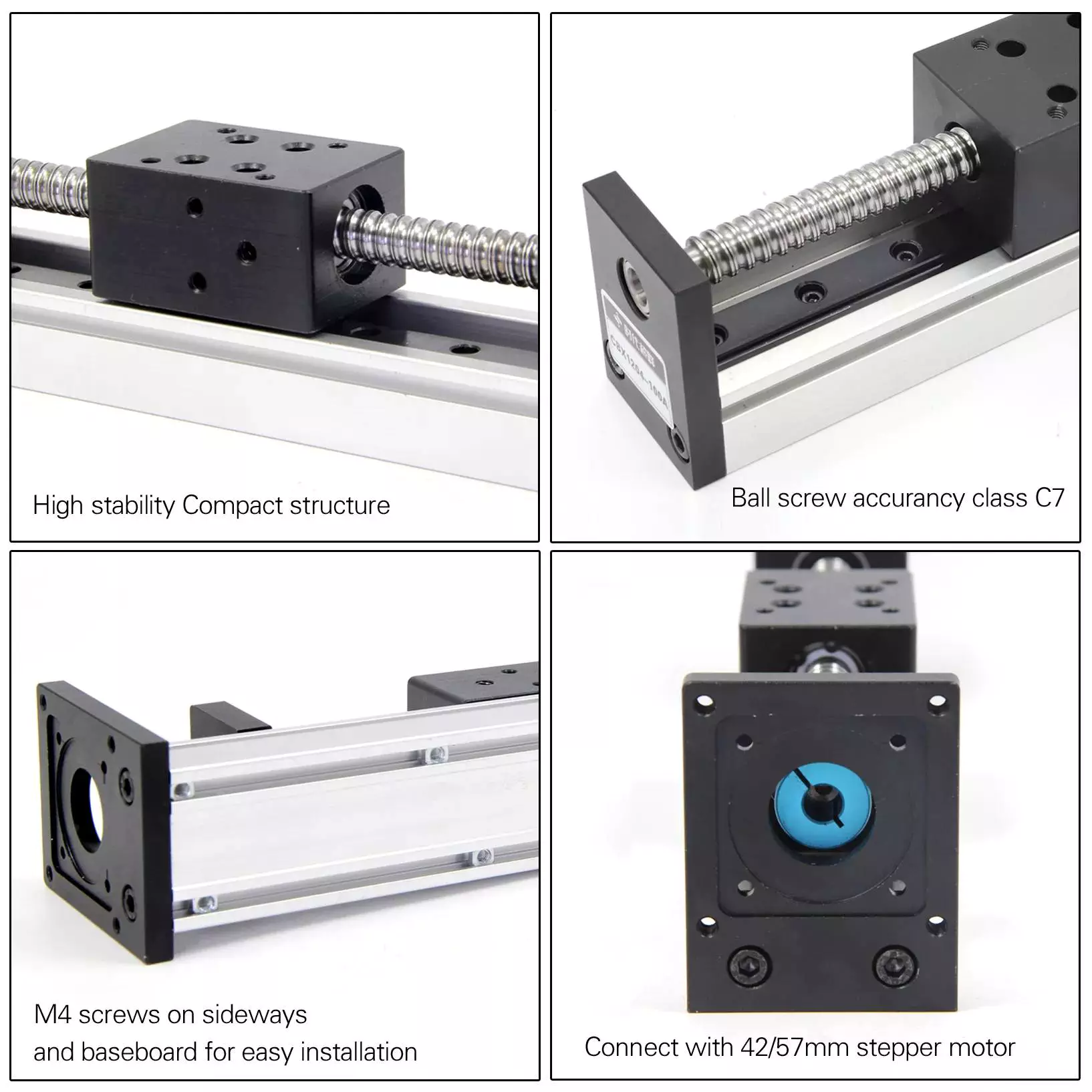
They provide large travel spaces
Various applications may call for the use of a linear rail. These can be square, rectangular or round in shape and can handle loads from a few grams to thousands of kilograms. They also have a long lifespan.
In a nutshell, a linear rail provides low friction guidance for a load. They are used in the industrial sector in a number of applications. Aside from the obvious one’s, a single linear rail can save valuable floor space. It also ostensibly has the trifecta of a runner, power screw and ball bearings.
Linear rails are not for the faint of heart. Aside from the obvious cost, you will also be expected to mount, support and install them properly. You should also consider the size, shape and quality of the components. They can be bought in any length, from a few inches to several feet. They are also made from a wide variety of materials. Some of the materials used include steel, aluminum, and polymers. They can be shaped and joined to achieve very long travel lengths. They are also susceptible to damage.
The name of the game is to choose a good set of quality linear guides. There are two types in common usage today. The first is a runner with ball bearings, and the second is a runner with rollers. The latter is the less expensive choice. Aside from the usual suspects, you can also choose a saddle or fixed slide. It’s a good idea to use them in pairs. They are also the best suited for heavy duty applications.
The most important factor to consider when selecting a linear rail is the load capacity. While a single linear rail can be used in many applications, multiple rails are the best option for the job.
They withstand both tearing loads and torque forces
Generally constructed from corrosion resistant steel, linear rails are sturdy and robust enough to handle a wide variety of applications. They are usually used on mechanical systems with high precision requirements. They also provide a smooth and accurate motion.
In order to achieve the highest level of efficiency, the rail must be accurately supported and installed. It may also require some form of lubrication. The design of the rail may be influenced by factors like size, shape, and frequency of use.
For instance, linear rails are often used for actuator guides. These guide mechanisms provide a smooth, reliable, and low-friction motion. A runner is inserted inside the rail and moves from front to back. The runner may have ball bearings or a pair of sleeve bearings.
Another notable feature of the linear rail is the ability to withstand torque and tearing forces. They are also capable of handling larger loads, providing greater stability to the entire system. The most important feature is the fact that they are easy to install and remove. They are also capable of achieving high speeds.
There are many types of linear rails to choose from. Some may be suitable for consumer applications, while others are more suited for industrial applications. Some of the common factors that affect the lifespan of a rail include size, frequency of use, and mounting. A single rail is a space saver, while dual rails maximize bearing life.
Some of the major components in a linear slide include the runner, the bearings, and the carriage. In addition to the runner, the slide may also feature the motor, power screw, or other components. Some of these features are the smallest relative to the overall linear slide.
They’re cheaper than rods
Choosing the best linear rails for your fishing rod is no small feat. You must understand the characteristics of various rails before you can find the one that best fits your needs. You may also want to consider choosing a rail that will last for many years. This is especially true if you are fishing in saltwater.
The best linear rails are designed with a variety of factors in mind. They will help you achieve precision and longevity. In addition, these guides are made of materials that are durable. They are also affordable. There are a variety of choices, including round and square rails.
The best rods have a good selection of features, including a good reel seat and flexible nickel/titanium snake guides. You should also look for a rod that has a smooth but firm handle and a rod that is easy to use. The best rods will also be a bit pricier, but you will not regret your investment.
The best rods use quality cork and stacks of smaller cork rings. The best rods have a cork handle that has a good feel. This handle has a big flare at the bottom and has narrow cork rings on the top. This handle is the best fly rod handle that you will find.
The best rods also have a well made reel seat that will hold firmly and easily. It should also have thin nylon spacers between the rings for a positive lock up. The reel seat should also be made from an anodized black aluminum up-lock seat with a synthetic gray insert.
The best rods also have reputable guide sets. This includes a new CERECOIL stripping guide made of nickel Titanium. This guide uses a multi-taper design that removes material from the weakest areas, thus improving dampening and recovery.
They’re corrosion-resistant
Stainless steel linear rails are essential in many industries, including vacuum applications, the pharmaceutical industry, and electronic circuit machines. They are also necessary for washing down cycles.
Stainless steel rails have excellent corrosion resistance. The steel surface is coated with an inert layer that prevents the rusting of the steel. Steel surfaces can rust over time, though, and rust can contaminate equipment. It’s important to check with your manufacturer about any corrosion resistance treatments that may be available.
Carbon steel linear bearings can be treated with hard chrome, black chrome, or a corrosion-resistant coating. These bearings are more expensive than those made of austenitic steel, but they provide similar corrosion resistance. They also have a lower hardness.
Silicon Nitride balls are another option. These balls are 40% lighter than steel, so they can carry higher loads without causing electrolysis. They’re also inert to chemicals and are capable of higher speeds. They’re available in closed or open designs. They come in four different sizes. They’re also coated with CZPT coating, which reduces the surface area of the balls in contact with the steel.
Another option is electroless nickel plating, which is inexpensive. This type of plating uses nickel instead of copper to prevent corrosion. It also offers a low friction coefficient.
Another option is drylin(r) linear technology, which combines the corrosion-resistance of thermoplastic bearing liners with shafting. This technology is ideal for chemical washdown environments, as well as those in saltwater environments. These systems also provide excellent rigidity and high load-bearing capacities.
Other types of linear guides are also available. Plain bearing guides may be appropriate for less expensive applications, while round shaft systems may be better for more expensive applications.

editor by czh 2023-03-17